Neoclassical art and architecture involve the use of classical forms or themes in modern contexts. It is an artistic perspective that can be expressed in manners simple and complex, ranging from the banal use of Greek columns on a building’s front porch, to structures that actively engage with the classical past, adapting the standard elements of classical design in ways never imagined by their originators. In Providence, this sort of exploration of the usefulness of classical elements in the modern world can be seen in several pediments around Brown’s campus, the entranceway of List Art Center, and the Orpheus fountain overlooking the RISD museum.
Much of our course has been concerned with the development of artistic styles in the ancient Greek world. We’ve watched sculptures become more realistic and complex down the centuries, leading to the grand understanding of composition and form exhibited by classical artists. The transition from the archaic period to the classical is marked on the pediments of the temple of Aphaia at Aegina, where one pediment is done in a late archaic style, while the other shows an early classical understanding of how best to fill the space of the pediment with dynamic, realistic figures.
The modern pediment no longer serves the purpose of that seen as part of ancient Greek temples. Modern construction and materials do not require the triangular form of the pediment and peaked roof in order to lend structures stability. With this in mind, the presence of the pediment on so many buildings becomes problematic. If it were meant simply to imitate the Greek forms, than the pediment would contain sculpture like that scene on the Temple of Aphaia. For the most part, however, the pediments on Brown’s campus are unadorned (see images 1 and 2, an entryway to Sears House and the pediment on Rhode Island Hall), and the pediments that do have decoration are not done in a standard Greek style. The Ratty (image 3) and the John Carter Brown Library (image 4) both have decorated pediments, but the decoration is in an entirely different mode than that seen on Greek structures. Rather than an elegantly constructed sculptural scene, with figures falling away from the center to perfectly fill the pediment’s odd triangular space, both of these buildings showcase ornate curving patterns with shields at their centers. The juxtaposition of these artistic elements, which reflect the aesthetic of a far later period in history, and their frame, an ancient form, is striking. The way in which these two artistic concepts are combined signifies the interaction that takes place between the modern period and the ancient past, which is here valued and yet transformed into something different.
This transformation is carried to a new level by pediments such as those on University Hall and above Wayland Arch (images 5 and 6). As with the pediments above the Ratty and the John Carter Brown Library, these pediments preserve the triangular frame while using the space within in a way unimaginable to the ancient Greeks. The pediments on University Hall and above Wayland Arch contain windows – the space of the pediment, originally both a structural and decorative element, now sometimes used purely for decorative purposes, has become in these two buildings both structural and decorative yet again. The windows transform the space, giving it a useful function in lighting the room within. The utilitarian nature of the pediments on University Hall and Wayland ties them intimately to the Greek past. The pediment remains useful, although its present use is entirely different than its original function.
The columns lining the entry to List Art Center (image 7) are just as tied-in to the classical past as the windowed pediments on Wayland Arch and University Hall. Lists’s columns perform essentially the same function as columns on any classical building: they hold it up. However, the design of List makes the columns useful for the support of a structural element that didn’t even exist in the classical period. On List, the columns hold up an extension of the upper floors of the building over the entrance, in a way never seen in the ancient Greek world. The columns, therefore, maintain their function, tying List to the classical, yet at the same time are the element that allows List to depart from the typical form of a classical building.
Furthermore, the structure of List’s entryway, with columns on one side, the building on the other, and a roof above, creates a space reminiscent of that created by the addition of a peristyle on a classical temple. The presence of this space gives List yet another connection to the classical roots of architecture, while the very appearance of the building ties list to modern design. On the most basic level of visual analysis, it’s easy to see that List’s columns really don’t look anything like those of the classical orders. They are tall rectangular prisms, yet even in their complete departure from any resemblance to Doric, Ionic, or Corinthian, they are recognizable as the descendants of the Greek past.
The classical is present in the modern world in more ways than the handing down of architectural forms. Our culture is inundated with that of the ancient Greeks, including the knowledge of Greek myths. In the classical period, what we now call myths were most often displayed on friezes, or occasionally captured as single moments in statuary. The “Orpheus Ascending” fountain overlooking the RISD museum (image 8) follows the second approach, capturing a scene from myth as a frozen instant depicted in sculpture. Designed by Gilbert A. Franklin to commemorate the RISD presidency of John R. Frazier, the fountain intriguingly fuses modern and classical elements in one piece.
The most obvious level of the classical’s presence in this fountain is its subject matter, a scene from Greek myth. In the fountain’s form, however, we can see other indications of how the classical remains present in modern sculpture. To begin with, the shapes of the fountain are elegantly flowing, starting with a wavy base, continuing with the spreading robe of the female figure, and reaching a height with Orpheus’ arm bending gracefully towards his throat. Although these stylized people are hardly the same as the naturalistic forms that Greek sculpture aimed for, the effort undertaken here to create dynamic movement in a still form is the same as that seen in, for instance, the work of the classical Greek sculptor Myron in his Discobolus. The faces of these figures (image 9) also echo classical sculpture – Franklin, while certainly not aiming for strict realism, has tried to give the viewer a sense of the emotion of the scene by portraying realistic facial expressions, just like artists in the classical Greek world did when transitioning away from the uniform expressions of the figures from the archaic period.
Leaving form aside, the statue recalls the Greek past in its purpose. In a sense, it is a votive offering, dedicated to the memory of a former RISD president. It isn’t placed in a sanctuary, and it’s not meant for any deity, but it is a monument erected in honor of a great figure, just like a votive placed in or near a classical temple in honor of the deity worshipped there.
The neoclassical in Providence embraces a wide range of elements, from temple replicas on Brown’s campus and classical relics in the RISD museum, to modern sculptures and buildings that reinterpret the classical in ways suitable for modern structures, adapting the classical in new ways while preserving its essence. These forms are often most striking when classical and modern concepts are fused together, as in the Orpheus fountain, List Art Center’s columns, and several pediments on Brown’s campus. In these structures, the influence of the classical is seamlessly integrated with modern art and architecture, showing the essential place of the neoclassical in today’s world.
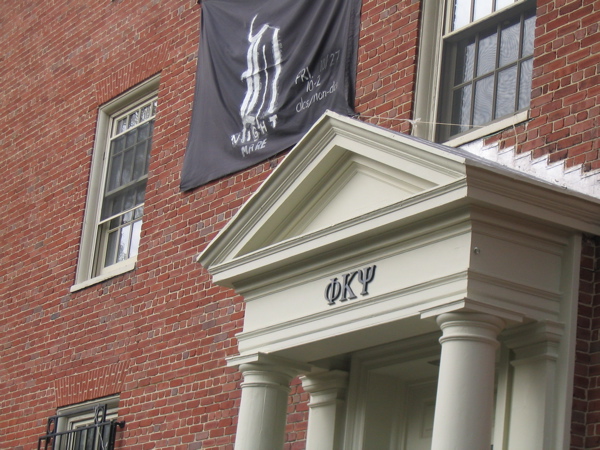 An entrance to Sears House
An entrance to Sears House
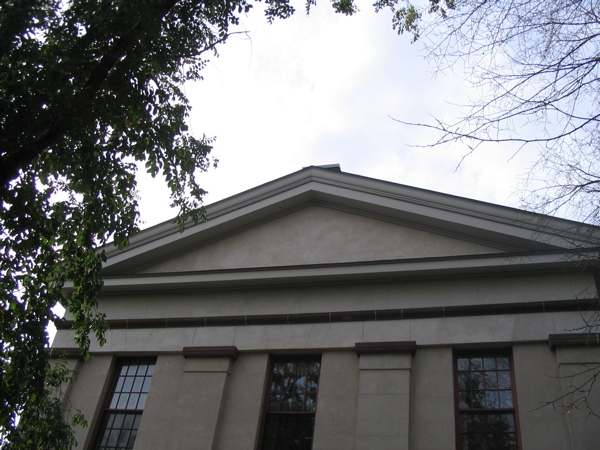 Rhode Island Hall
Rhode Island Hall
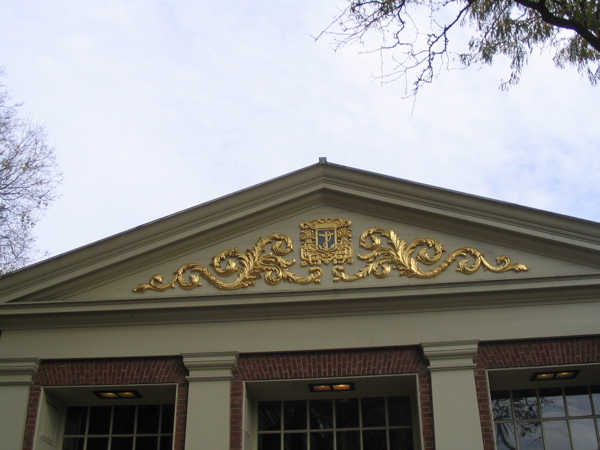 The Ratty
The Ratty
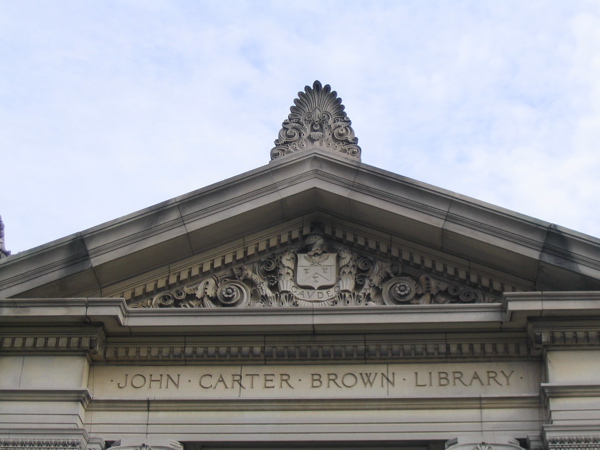 John Carter Brown Library
John Carter Brown Library
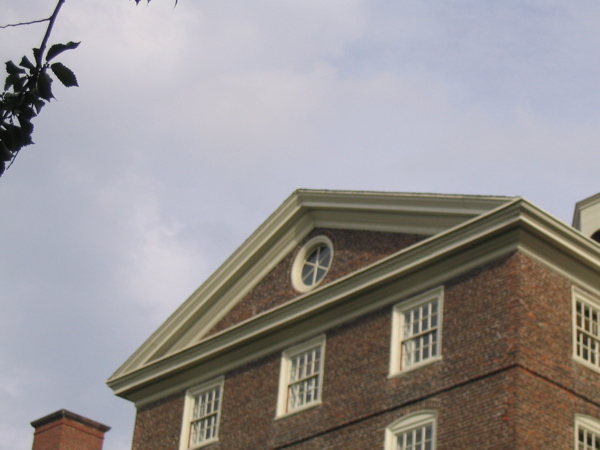 University Hall
University Hall
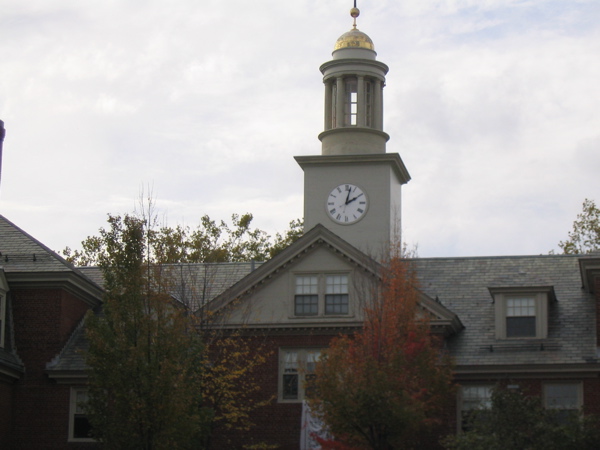 Wayland Arch
Wayland Arch
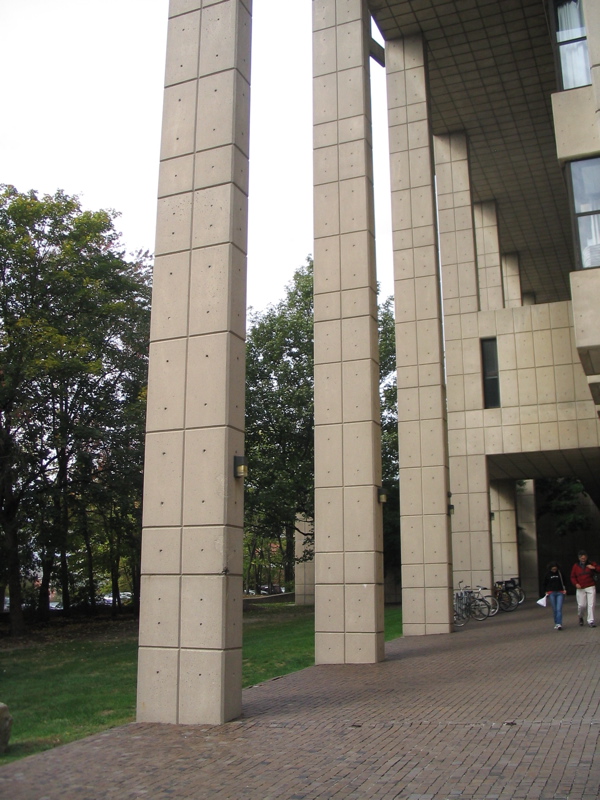 List Art Center
List Art Center
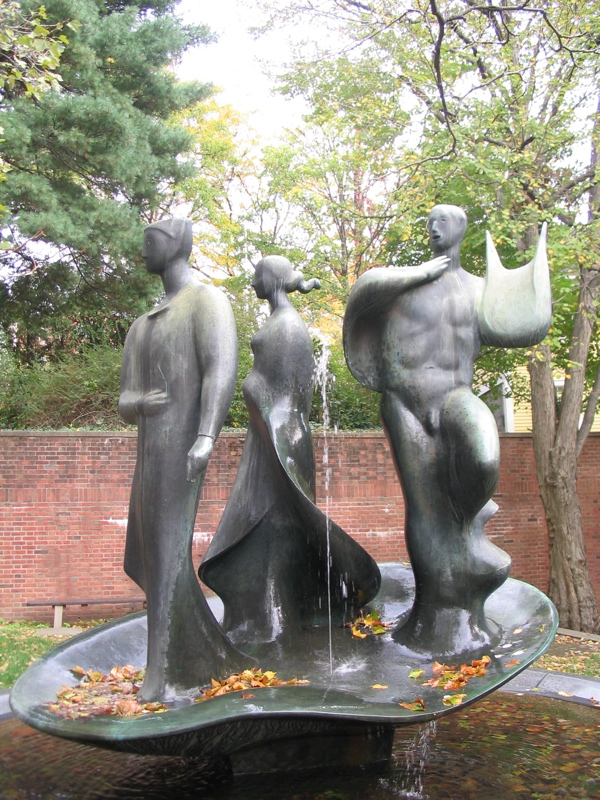 The "Orpheus Ascending" Fountain
The "Orpheus Ascending" Fountain
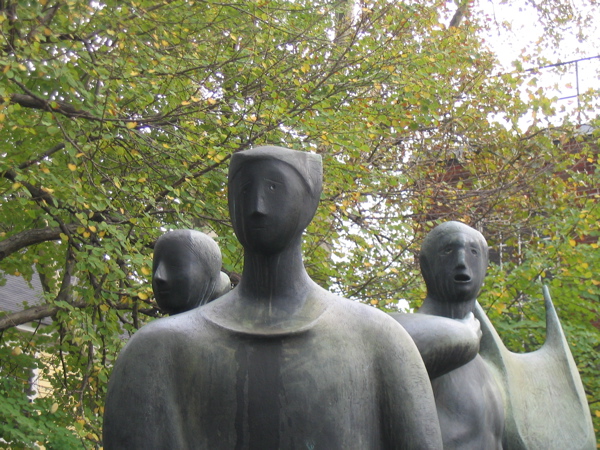 The faces of the statues
The faces of the statues
Posted at Nov 04/2007 08:47PM:
Keffie: You do a good job of drawing broad connections between the functions and stylistic conventions of Greek art and architecture and the ways in which Neoclassical art and architecture are used today!
Posted at Nov 05/2007 01:17AM:
Harry Anastopulos: My favorite aspect of your project is your treatment of the Orpheus statues near RISD (which, unfortunately, Reem and I decided to cut out because of our focus on architecture). What I find most interesting is when ancient Greek themes are re-used and re-formulated through a modern medium (sometimes to the point of being almost unrecognizable).
Perhaps a reverse-example of this relationship from the ancient world would be those Cycladic figurines that we learned about at the beginning of the year. Those exquisite statues bear quite a resemblance to more stream-lined modern art (probably explaining the insane amount of looting that gones on...).
Posted at Dec 13/2007 06:18PM:
Rachel Griffith: You covered three very different topics here-- pediments, columns, and sculpture-- but you did a great job tying them all together by comparing how they relate to Classical Greek styles in appearance vs. purpose.
